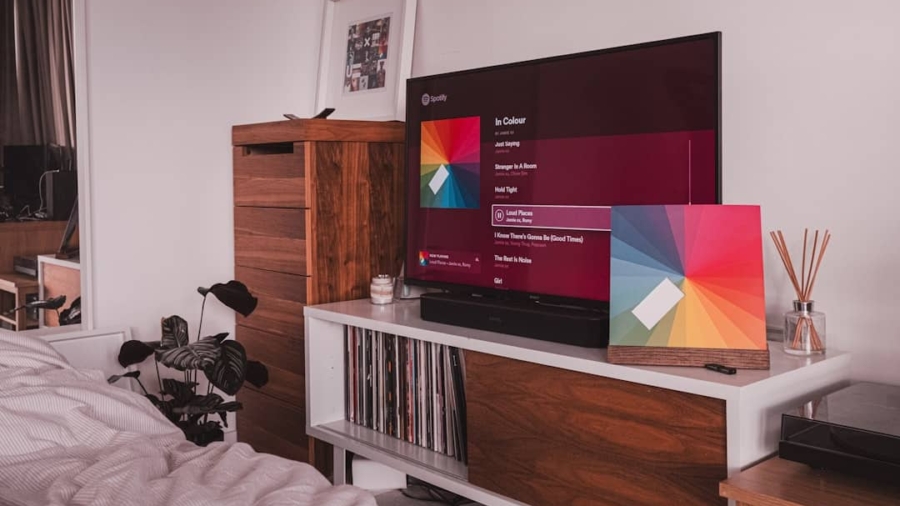In the digital age, streaming devices have revolutionized the way we consume media, providing users with unprecedented access to a vast array of content. These devices serve as a bridge between traditional television and the internet, allowing viewers to stream movies, TV shows, music, and even live events directly onto their screens. The rise of streaming services like Netflix, Hulu, Amazon Prime Video, and Disney+ has fueled the demand for devices that can seamlessly deliver this content.
As a result, consumers are presented with a plethora of options, each boasting unique features and capabilities. Streaming devices come in various forms, including standalone boxes, sticks that plug directly into HDMI ports, and even integrated solutions within smart TVs. The appeal of these devices lies not only in their ability to provide access to a wide range of content but also in their user-friendly interfaces and compatibility with various platforms.
Key Takeaways
- Streaming devices allow users to access and stream content from various online platforms on their TV.
- Popular streaming devices like Roku, Amazon Fire TV, Apple TV, and Google Chromecast offer different features and functionalities.
- User interface and navigation vary among streaming devices, with some offering voice control and personalized recommendations.
- Content selection and search functionality differ, with some devices offering universal search across multiple platforms.
- Streaming quality and performance can vary based on the device and internet connection, with some devices offering 4K and HDR support.
Comparison of Popular Streaming Devices
When it comes to selecting a streaming device, several popular options dominate the market, each with its own strengths and weaknesses. The Amazon Fire TV Stick, Roku Streaming Stick, Apple TV 4K, and Google Chromecast are among the most widely recognized devices. The Amazon Fire TV Stick is known for its affordability and integration with Alexa, Amazon’s voice assistant.
It offers a straightforward setup process and provides access to a wide range of streaming services. However, some users may find its interface cluttered due to the heavy promotion of Amazon’s own content. On the other hand, Roku has built a reputation for its simplicity and ease of use.
The Roku Streaming Stick offers a clean interface that allows users to navigate through channels effortlessly. It supports a broad spectrum of streaming services and is often praised for its neutrality, as it does not prioritize any specific service over others. Apple TV 4K stands out for its premium build quality and seamless integration with the Apple ecosystem.
It offers features like AirPlay and HomeKit compatibility but comes at a higher price point compared to its competitors. Google Chromecast takes a different approach by allowing users to cast content from their mobile devices directly to their TVs, making it an appealing option for those who prefer using their smartphones as remote controls.
User Interface and Navigation
The user interface (UI) of a streaming device plays a crucial role in shaping the overall viewing experience. A well-designed UI can enhance usability and make it easier for users to find their favorite content quickly. The Amazon Fire TV Stick features a visually rich interface that showcases recommended content prominently.
However, this can sometimes lead to an overwhelming experience for users who prefer a more straightforward navigation system. The Fire TV’s reliance on promotional content can detract from the user experience, as it may prioritize Amazon’s offerings over other services. In contrast, Roku’s interface is often lauded for its simplicity and organization.
Users can easily access their favorite channels from the home screen without unnecessary distractions. The layout is intuitive, allowing for quick navigation through various categories such as Movies, TV Shows, and Live TV. Roku also provides personalized recommendations based on viewing habits, which can enhance content discovery.
Apple TV 4K offers a sleek and polished interface that aligns with Apple’s design philosophy. Its integration with Siri allows for voice commands to search for content or control playback, adding an extra layer of convenience.
Content Selection and Search Functionality
The breadth of content available on a streaming device is a significant factor influencing user satisfaction. Each device has its own library of supported apps and services, which can vary widely. The Amazon Fire TV Stick boasts access to a vast array of channels, including popular services like Netflix, Hulu, and Prime Video.
However, some users have expressed concerns about the prominence of Amazon’s own content within the interface, which can overshadow other offerings. Roku excels in providing an extensive selection of channels without bias toward any particular service. Users can access thousands of free and paid channels, making it one of the most versatile options on the market.
Its search functionality is particularly noteworthy; Roku allows users to search across multiple platforms simultaneously, making it easier to find specific titles regardless of where they are available. Apple TV 4K also offers robust search capabilities through Siri, enabling users to find content across various apps quickly. However, its reliance on Apple’s ecosystem may limit access to certain services compared to more open platforms like Roku.
Streaming Quality and Performance
Streaming quality is paramount for an enjoyable viewing experience, and different devices offer varying levels of performance in this regard. The Amazon Fire TV Stick supports up to 4K Ultra HD resolution and HDR formats, ensuring that users can enjoy high-quality visuals when paired with compatible TVs. Its performance is generally smooth, with minimal buffering times when connected to a stable internet connection.
Roku Streaming Stick also supports 4K HDR streaming and is known for its reliable performance across various network conditions. Users often report consistent playback without significant lag or interruptions. Apple TV 4K takes streaming quality a step further by offering Dolby Vision and Dolby Atmos support, providing an immersive audio-visual experience that appeals to cinephiles and audiophiles alike.
Google Chromecast’s performance largely depends on the user’s mobile device; while it can stream in high quality, any limitations in the casting device may affect playback quality.
Additional Features and Apps
Voice Control and Hands-Free Functionality
The Amazon Fire TV Stick includes Alexa voice control, allowing users to search for content or control playback using voice commands. This hands-free functionality can be particularly useful when navigating through extensive libraries or when multitasking.
Private Listening and Multi-User Support
Roku devices come equipped with features like private listening through mobile apps, enabling users to listen to content through headphones connected to their smartphones while watching on TV. This feature is especially beneficial in households where multiple people may be watching different programs simultaneously.
Seamless Sharing and Smart Home Integration
Apple TV 4K offers unique features such as AirPlay support for streaming content from Apple devices and integration with HomeKit for controlling smart home devices directly from the TV interface. Google Chromecast stands out with its ability to cast content from various apps directly onto the TV screen using mobile devices as remote controls. This feature allows for seamless sharing of photos or videos during gatherings or parties without needing additional remotes or interfaces.
Integration with Smart Home Devices
As smart home technology continues to evolve, the integration of streaming devices with smart home ecosystems has become increasingly important for consumers seeking convenience and connectivity. The Amazon Fire TV Stick integrates seamlessly with Alexa-enabled devices, allowing users to control their smart home gadgets using voice commands while watching their favorite shows or movies. This integration extends beyond simple commands; users can adjust lighting or thermostat settings without leaving their couch.
Apple TV 4K also excels in this area with its compatibility with HomeKit-enabled devices. Users can control smart lights, locks, and thermostats directly from their Apple TV interface or through Siri voice commands. This level of integration enhances the overall smart home experience by centralizing control within one device.
Roku has made strides in smart home integration as well but does not offer the same level of functionality as Amazon or Apple in this regard. While Roku does support some smart home features through third-party apps, it lacks native integration comparable to that found in Fire TV or Apple TV ecosystems.
Conclusion and Recommendations
In navigating the diverse landscape of streaming devices, consumers must consider various factors such as user interface design, content selection, streaming quality, additional features, and smart home integration capabilities. Each device has its unique strengths that cater to different preferences and needs. For those deeply embedded in the Amazon ecosystem or seeking an affordable option with robust voice control capabilities, the Amazon Fire TV Stick is an excellent choice.
Conversely, users who prioritize simplicity and neutrality in content selection may find Roku’s offerings more appealing. For individuals who value premium features and seamless integration within Apple’s ecosystem, Apple TV 4K stands out as a top-tier option. Ultimately, the best streaming device will depend on individual preferences regarding content consumption habits and existing technology ecosystems within the home environment.
By carefully evaluating these factors, consumers can make informed decisions that enhance their entertainment experiences while adapting to the ever-evolving landscape of digital media consumption.
If you are interested in technology and user experience, you may also want to check out




